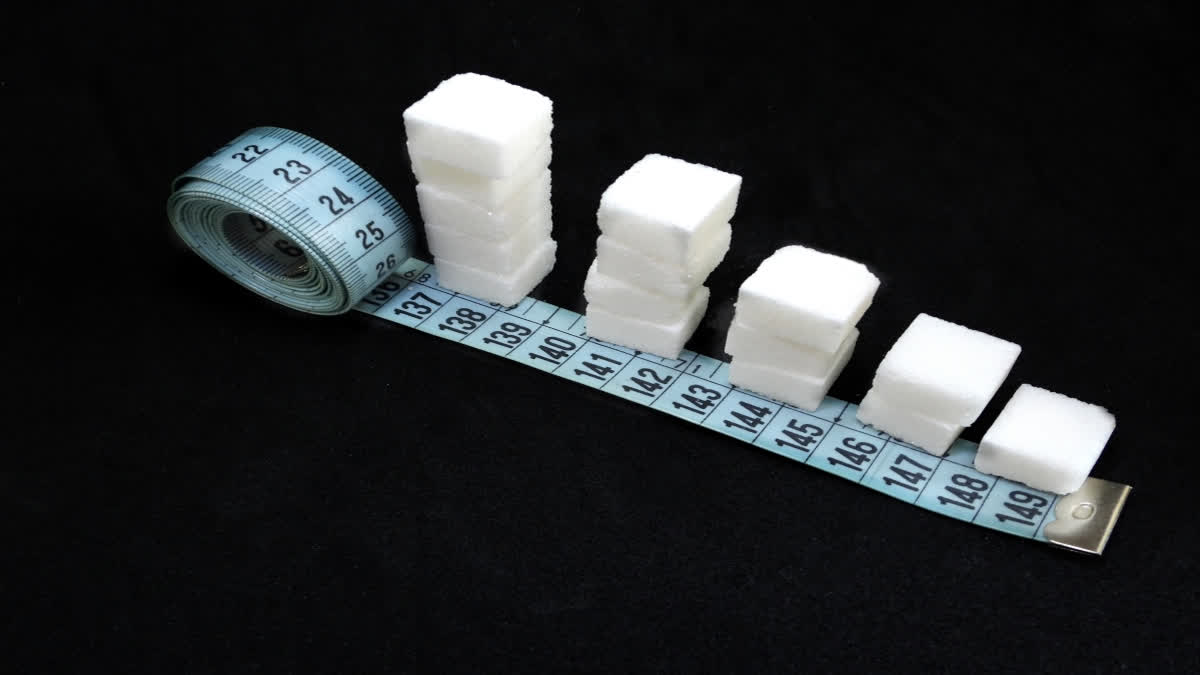New Delhi: A day after Delhi Minister and Aam Aadmi Party (AAP) leader Atishi claimed that Arvind Kejriwal is a diabetic patient and his sugar level crossed 300, health experts said that the sudden rise in sugar level above 300 is severe. “If the sugar level is 300 and above, we need medical management,” said Dr Tamorish Kole, past president of the Asian Society for Emergency Medicine.
ETV Bharat tried to look into diabetes, which is being reported alarmingly in India.
What are the common causes of diabetes?
According to Dr Kole, diabetes prevalence in India is impacted by various factors like unhealthy eating habits, decreased physical activity, urbanisation and stress. The shift towards calorie-dense, high-glycemic diets (especially fast food) and sedentary lifestyles significantly influences diabetes risk. Moreover, pollution and mental health stressors are also associated with this chronic condition.
Age-specific trends reveal that adults aged 35 to 49 years report the highest prevalence while young adults (15-19 years) have the lowest incidence.
When can diabetes be severe?
Most diabetics in India are Type 2 where the body either doesn’t produce enough insulin or resists insulin. Severe acute complications of Type 2 patients include high sugar conditions like diabetic ketoacidosis or hyperosmolar hypertonic nonketotic state and low sugar conditions like hypoglycemia. These conditions require prompt identification and management. However, with the duration of diabetes, chronic complications arise. Chronic complications are categorised as microvascular (retinopathy, neuropathy, and nephropathy), macrovascular (coronary artery disease, cerebrovascular disease, peripheral vascular disease), and nonvascular (including infectious) complications.
At what level one should take insulin for diabetes
There is no specific level for this. It’s up to the doctors to decide based on the type of diabetes, glycemic control and other medical conditions. No one should start or discontinue insulin without doctors’ advice.
Prevalence of diabetes
According to the National Family Health Survey (NFHS-5, 2019-21), the prevalence of diabetes for individuals aged 15-49 years was found to be 4.90 per cent (4.80 to 5.00 per cent). Among them, the proportion of individuals with undiagnosed diabetes was 24.82 per cent (24.07 to 25.59%), with higher among males (28.82 per cent) (26.45 to 31.30 per cent) than females (24.22 per cent) (23.44 to 25.01 per cent).
Casualty rate due to diabetes in India
India is home to the world’s second-highest number of diabetics. Within the age group of 20–79 years, India had 74.9 million diabetics in 2021 projected to increase to 124.9 million by 2045. As per estimate, the mortality rate due to diabetes in India was 27.35 deaths per 1,00,000 population in 2019.
Read More



